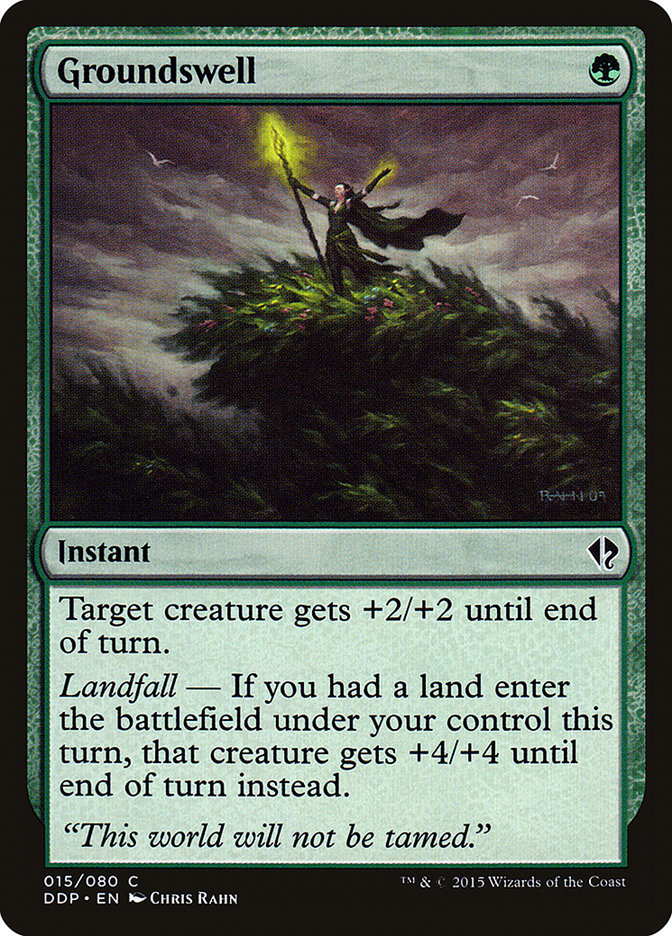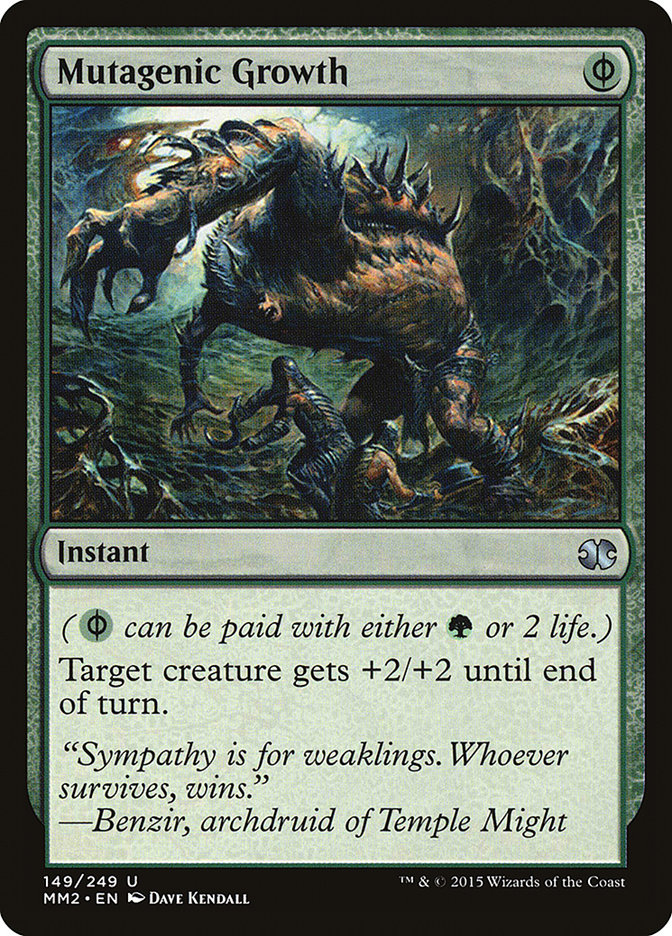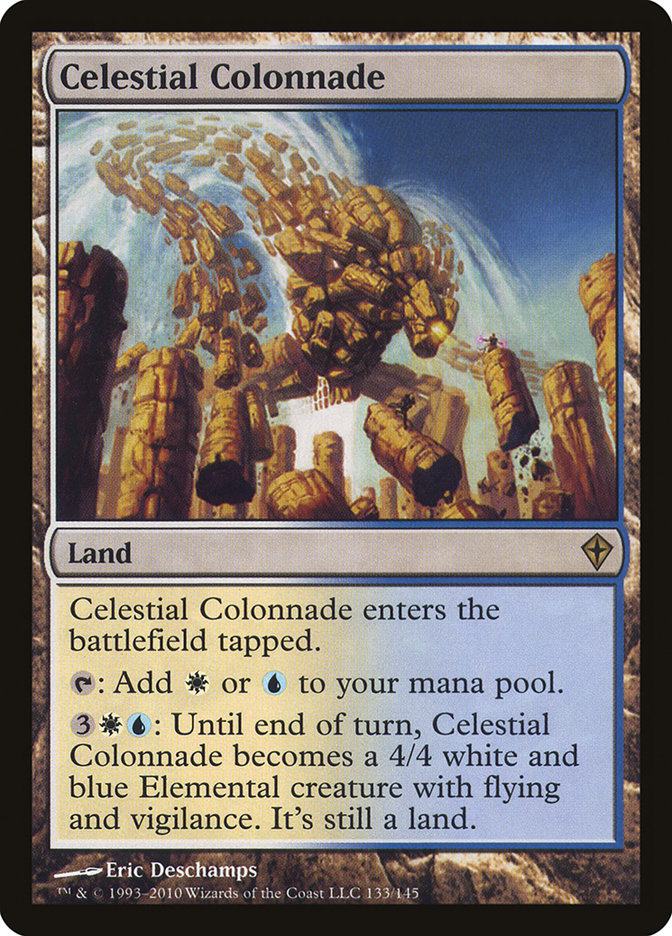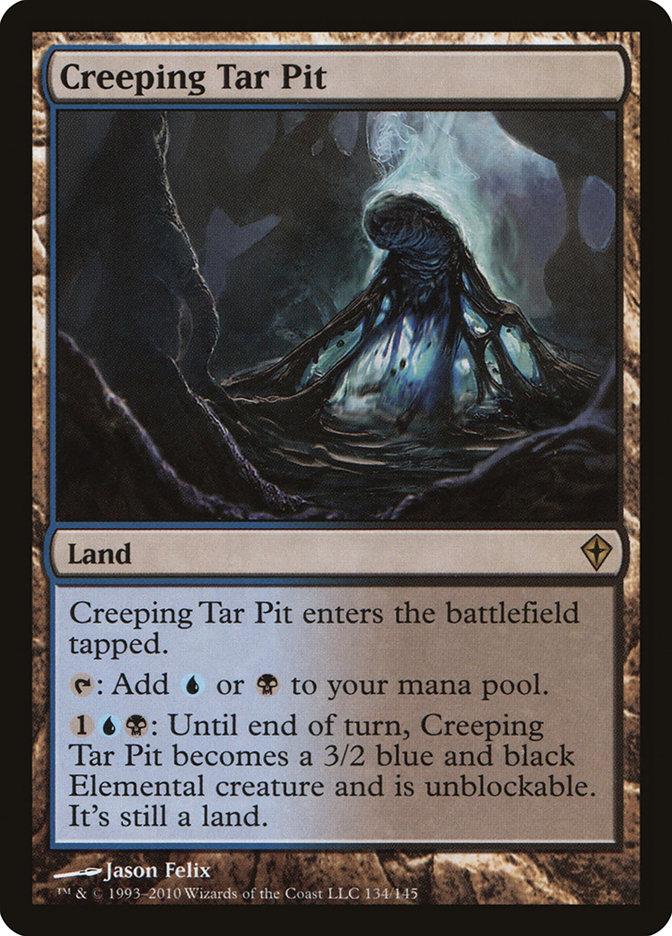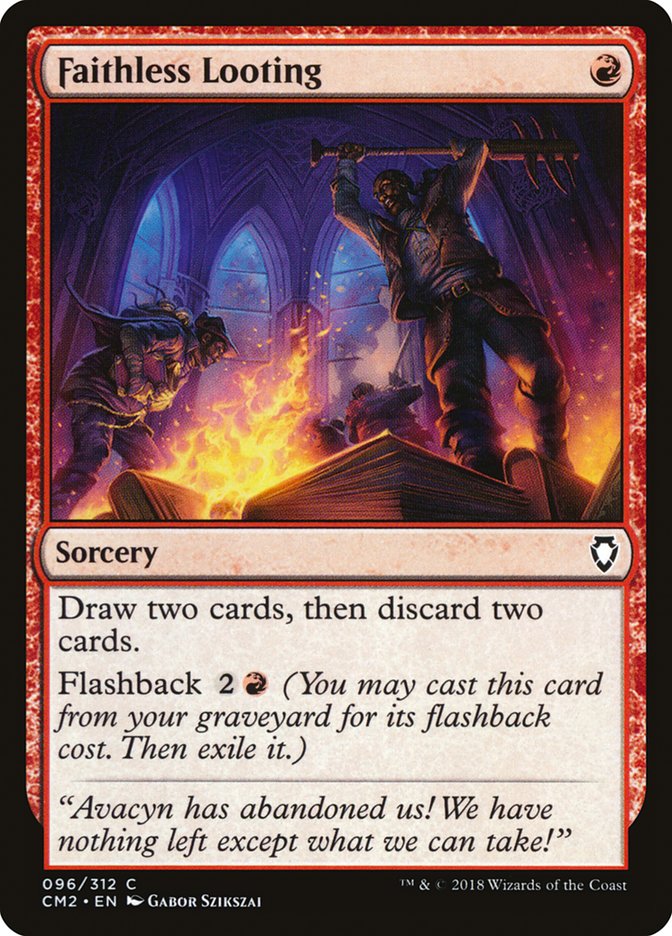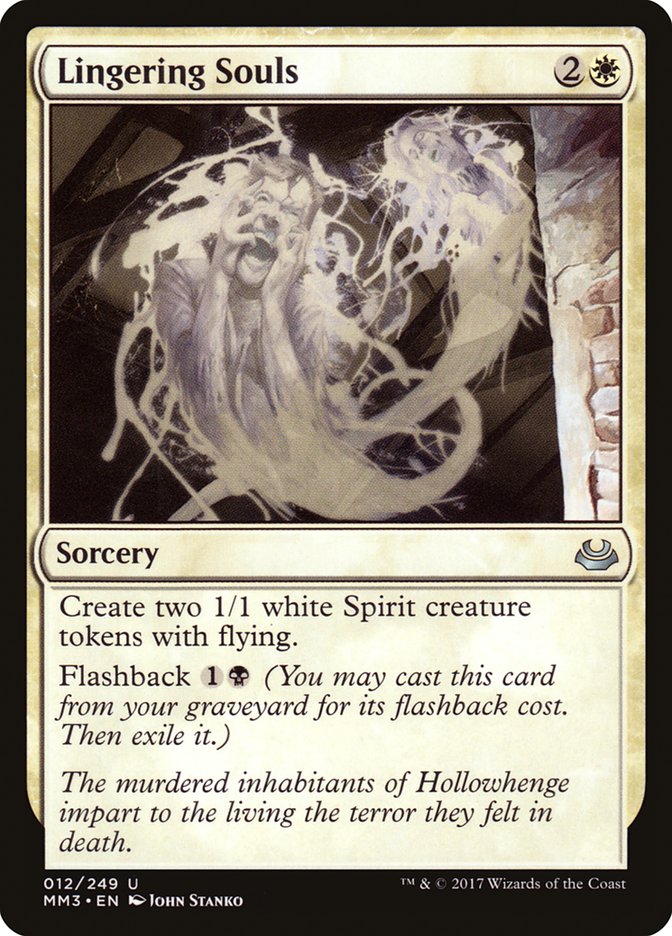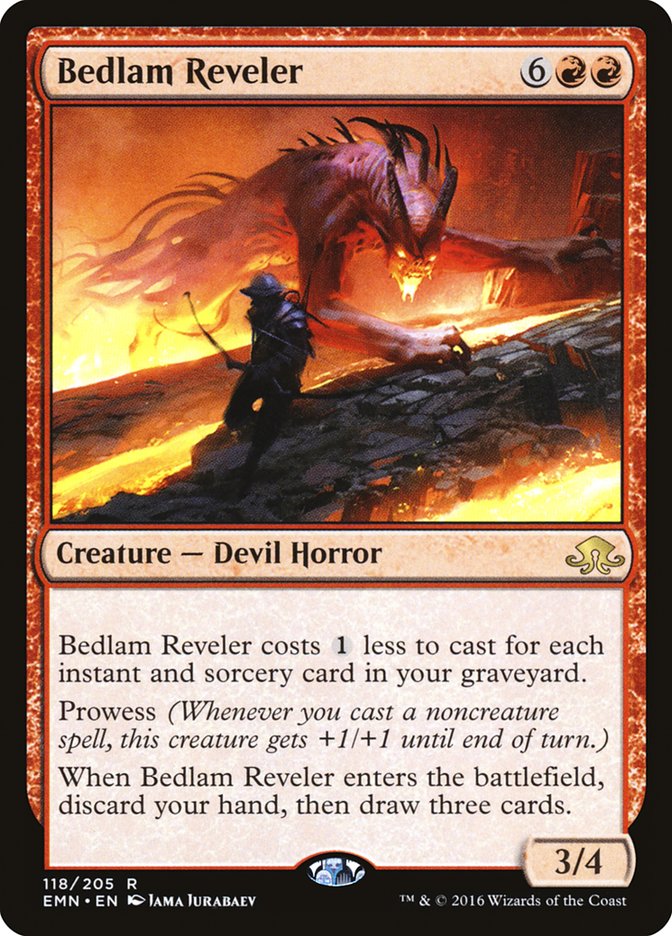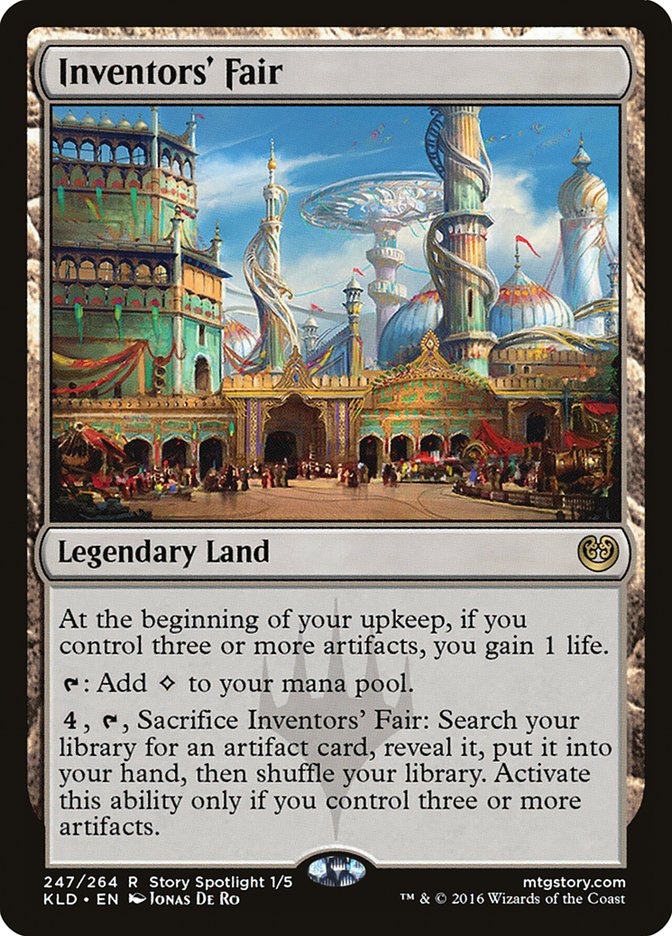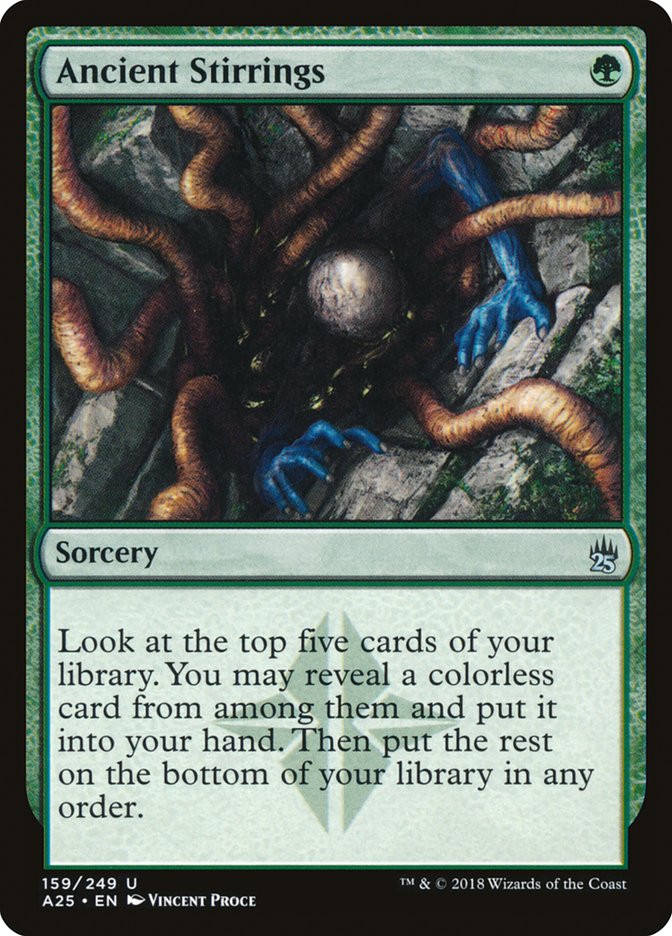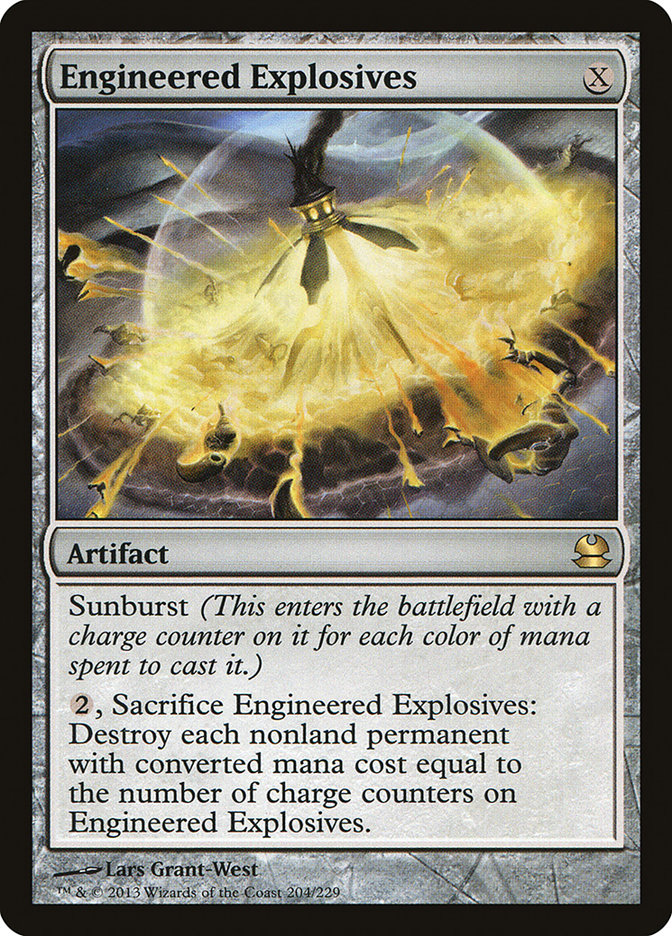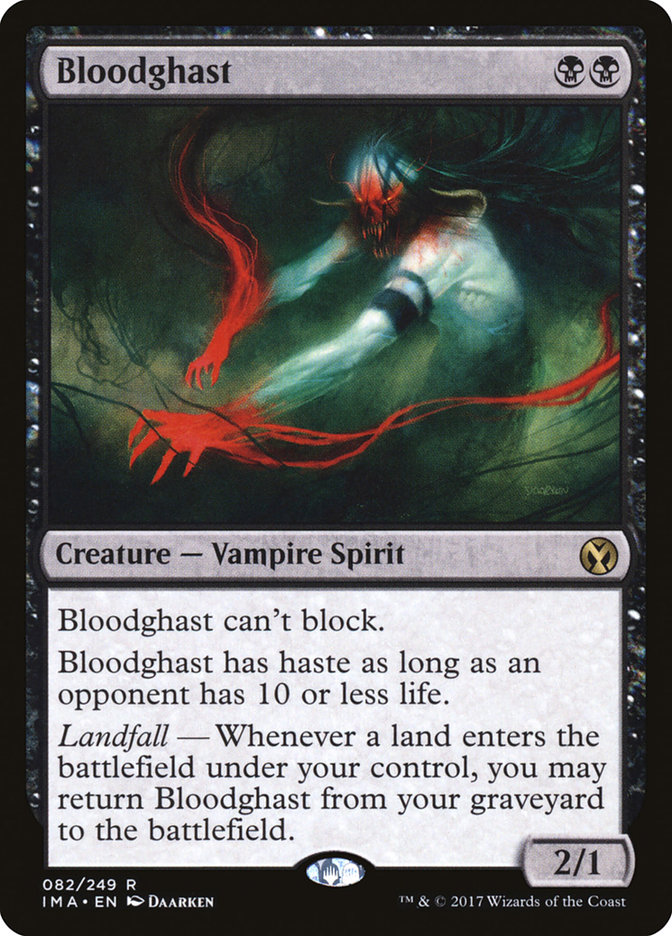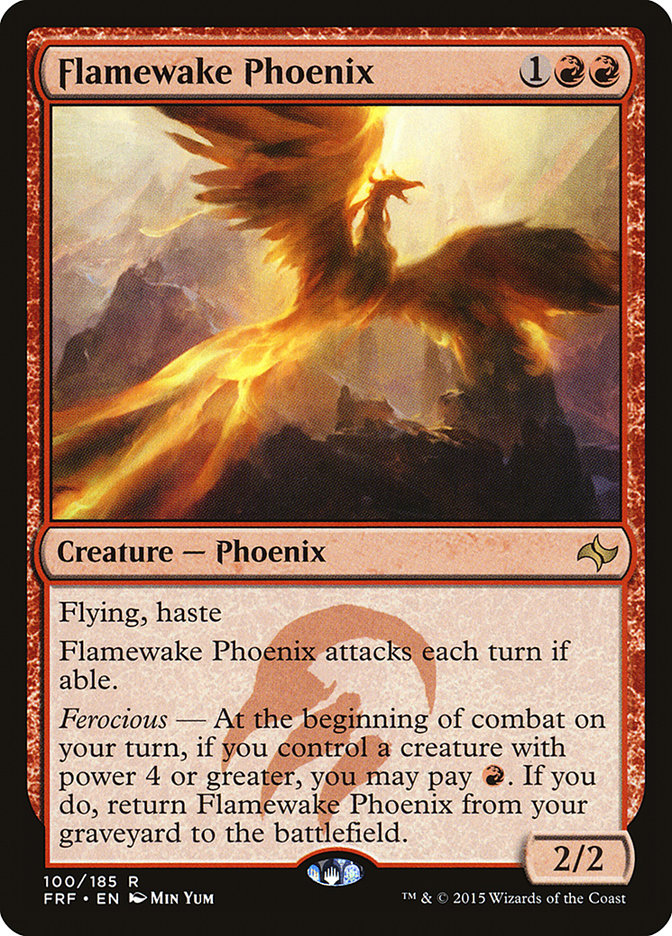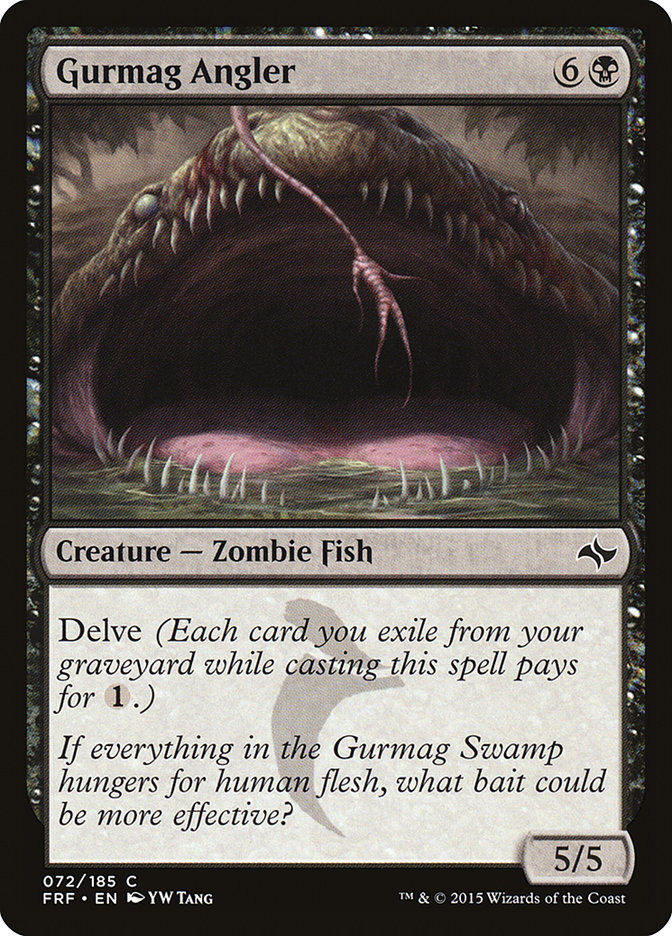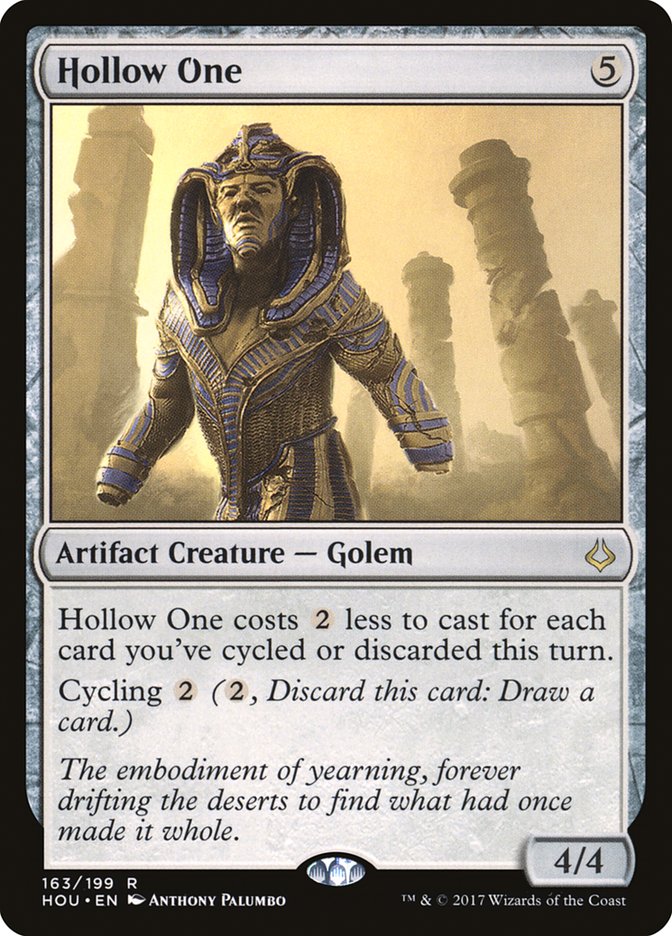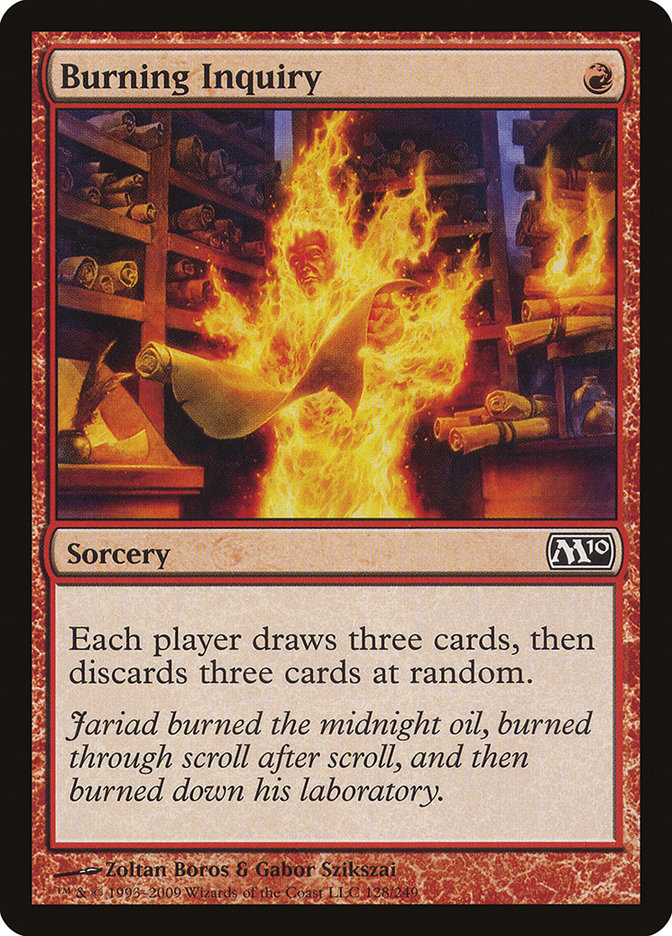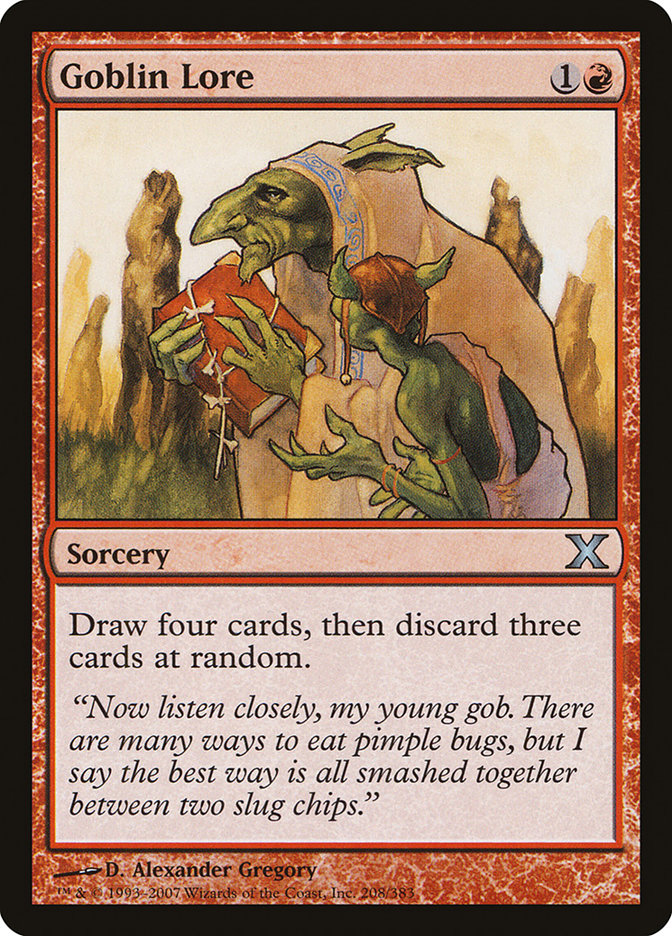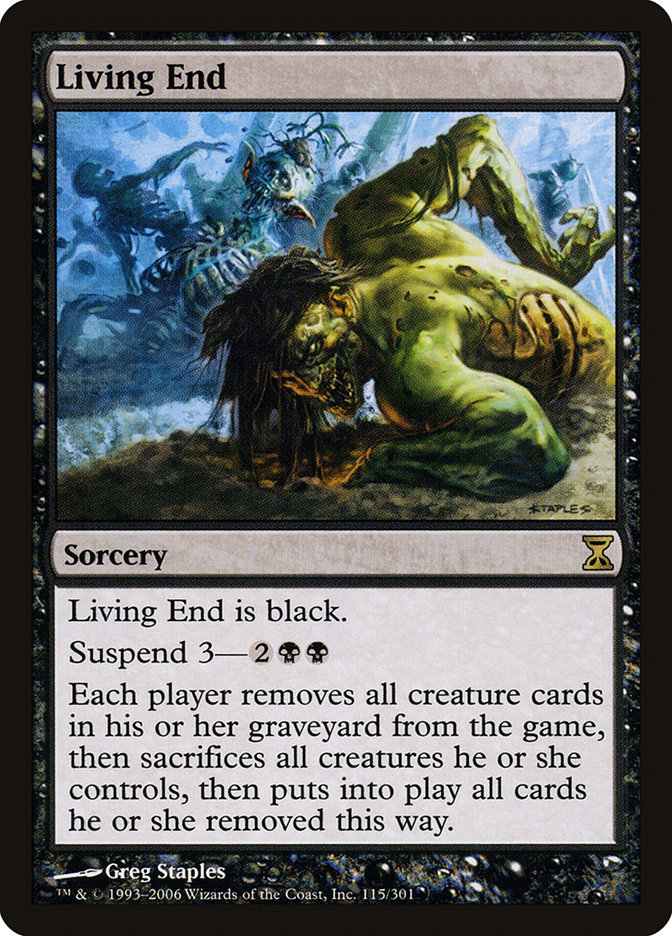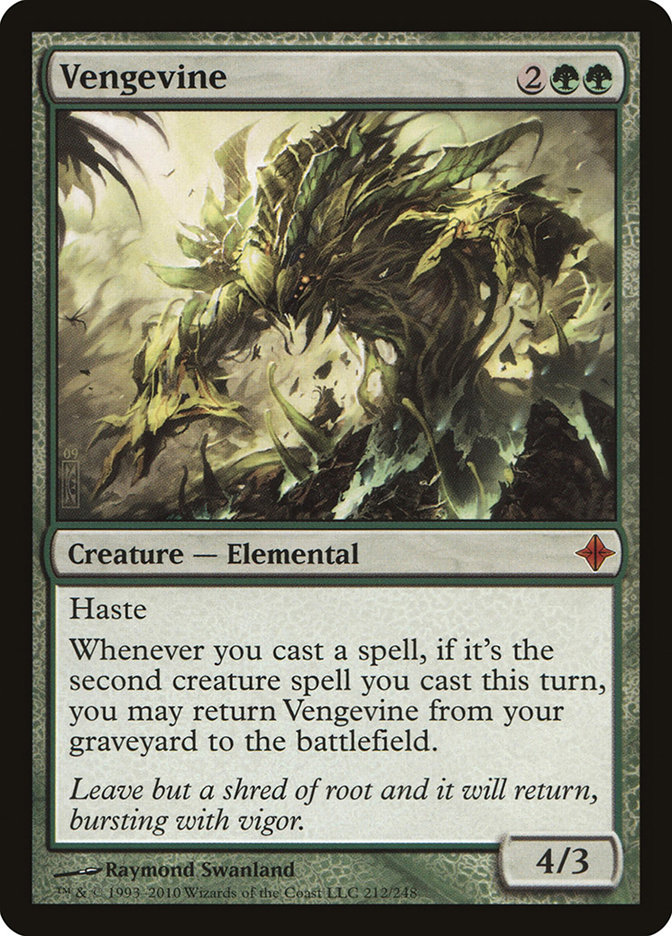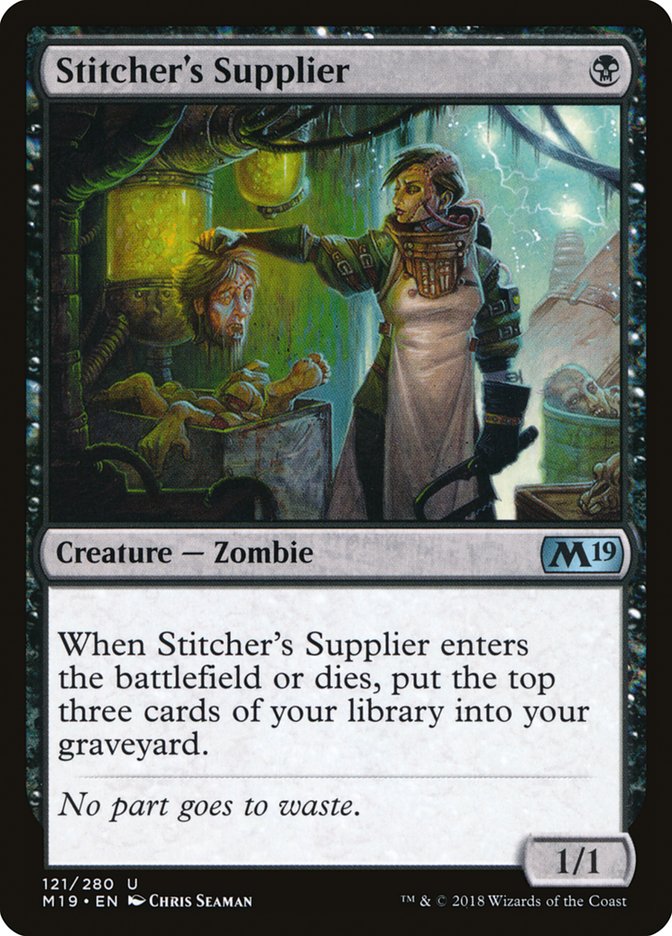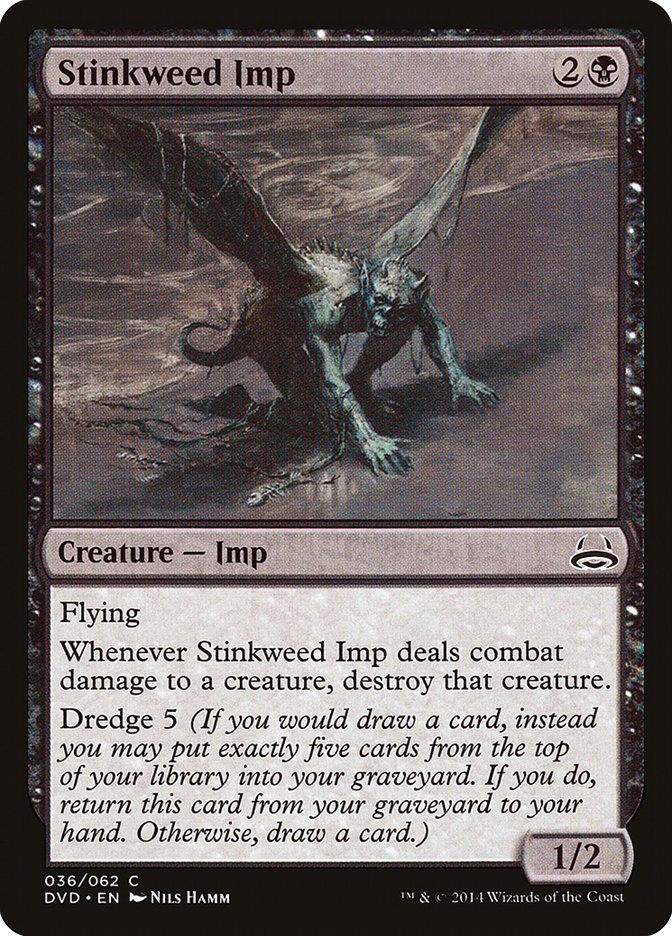Earlier this week, Ari Lax had a
fantastic article
outlining how the top decks in Modern tend to line up against one another,
including details of the early-, mid-, and late-game of each matchup. What
it did not cover is why those decks tend to have success over
other decks in the format.
More specifically, why it is that each of the decks represents the most
successful deck in its own macro archetype. It becomes easier to understand
some of the edges these decks have when we break them down by what they’re
doing.
Rather than thinking of things as specifically as their deck name, think of
them more like this:
The Disruptive Aggro Deck
Creatures (37)
- 4 Meddling Mage
- 1 Dark Confidant
- 4 Noble Hierarch
- 4 Phantasmal Image
- 4 Champion of the Parish
- 3 Thalia, Guardian of Thraben
- 1 Kessig Malcontents
- 4 Mantis Rider
- 4 Reflector Mage
- 4 Thalia's Lieutenant
- 4 Kitesail Freebooter
Lands (19)
Spells (4)

Decks being outpaced by Humans:
Grixis Death’s Shadow, Infect, Affinity
It may seem strange to rank Humans higher than Infect with Infect winning
the most recent
Modern Open
and
Season One Invitational
, but outside of those two results, Infect hasn’t been putting up
particularly consistent results and requires a fairly specific metagame to
succeed.
Grixis Death’s Shadow has seen a bit of an uptick recently to contest
Human’s position on the proverbial leaderboard, but what Humans has on
Shadow is the same thing that it has on Affinity and Infect: fewer moving
parts.

Both Affinity and Grixis Death’s Shadow tend to suffer since they’re both
decks featuring a ton of air with payoff cards.

The air in Grxis Death’s Shadow is generally going to take shape in the
form of cantrips. While they can be self-correcting, with Modern being as
punishing as it is, the amount of time a Grixis Death’s Shadow deck invests
in spinning its wheels accounts for a very real quantity of its game
losses.
Infect has the same problem, but in reverse, where its payoff cards (read:
Infect creatures) are what enable the other cards of the archetype. A big
draw to Humans is that nearly all its cards function independently and are
pushed into overdrive when played in tandem with one another.
Kitesail Freebooter and Meddling Mage are both serviceable cards in their
own right but have obvious and natural synergy with one another. On the
flip side, drawing several copies of cards in the Humans decks can also be
beneficial. Drawing several copies of Meddling Mage is going to make it
hard for the opponent to play the game; loads of Thalia’s Lieutenants
translate to a colossal army.
The same can’t necessarily be said for the other decks, looking to draw
almost exclusively a mix of all their pieces. This translates to the other
disruptive aggro decks being easier to disrupt. Control and midrange decks
are going to have a much easier time answering the two or three threats
that Infect and Grixis Death’s Shadow will present than it is to have to
answer between one and three creatures every turn for the entire game.
Even looking past the deck’s resiliency to typical disruption, the deck
also doesn’t suffer from “wrong half of the deck” syndrome quite as hard as
some of its competitors in this category.
Most disruptive aggro decks generally have an “aggressive half” and a
“disruptive” half. Because all of Humans’ disruption is proactive, when it
draws the “wrong half,” it still can apply pressure and move the game
closer to concluding.
Think of it this way: Reflector Mage may suck against something like
Jeskai, but it can still grow to be a 3/4 with the help of Thalia’s
Lieutenant and become difficult to kill with a Lightning Bolt. Even without
a text box, that 3/4 is going to have to be answered at some point.
Recognizing the edges these decks have over others is what helps us
capitalize on specific pressure points of decks or learn what isn’t
working.
The Big Mana Deck
Creatures (8)
Planeswalkers (6)
Lands (19)
Spells (27)

Decks being outpaced by Mono-Green Tron:
Valakut variants, Amulet Titan, Eldrazi Tron, Multi-color Tron variants
The reason that Mono-Green Tron is head-and-shoulders more successful in
today’s Modern world is simple:
It’s the most resilient to Blood Moon.
All the aforementioned decks are going to have answers to Blood Moon, be it
Reclamation Sage via Summoner’s Pact, copious amounts of Nature’s Claim, or
even just Wastes, but Mono-Green Tron has the best plan of all: playing
through it.
As long as the deck has a Forest, Tron is going to be able to continue
hitting its land drops and start hard-casting its threats. Tron players
have collectively realized that Blood Moon decks don’t tend to play large
amounts of pressure, and that it’s more than possible to play straight up
with boring old Mountains.
Looking past the deck’s resiliency to Blood Moon, it’s also incredibly
redundant. With such a high threat density, the Mono-Green iteration of
Tron recognizes that it doesn’t need to get fancy with other colors. It has
a plan, it’s powerful, and it simply needs to execute that plan to get its
game wins.
Despite the above list only having between twelve and eighteen payoff
cards, depending on the matchup, between the Chromatic cantrips, Relic of
Progenitus, and Ancient Stirrings, that number is actually much higher.
Even the more payoff-dense Bring to Light iterations of Scapeshift tend to
have eight to ten draws that result in their deck doing anything
meaningful. The density of cantrips and true threats in Tron makes each
draw step closer to a true coin flip than the 15-25% numbers of outs that
more traditional Magic conditions us into thinking are absurdly high.
The Blue Control Deck
Creatures (4)
Planeswalkers (2)
Lands (25)
Spells (29)

Decks being outpaced by Jeskai Control:
U/W Control, Blue Moon, Grixis Control
People love their Cryptic Commands, and Jeskai has the best ones. The logic
behind Jeskai having the best Cryptic Commands is that it’s the best at
bridging the gap to Cryptic Command.

That’s…. a lot of removal. On top of all its countermagic, Jeskai is the
best deck at handling things that slip under its permission. Sure, all the
decks it’s outperforming also have access to some of these tools, but none
of them have access to all of them.
U/W Control is great at going over the top and locking opponents out with
Spreading Seas and Runed Halo, but without red, it’s actually somewhat
difficult to answer early little creatures a la Glistener Elf and Champion
of the Parish. Conversely, Blue Moon has all the Bolts and Electrolyzes in
the world, but it’s so hard to get a Gurmag Angler off the battlefield
without setting up something like Harvest Pyre or taking counter-shields
down for Roast.
”
But Emma, Grixis can just play Terminate instead of Path to Exile and
Damnation over Supreme Verdict. What gives?”
Correct, shoehorned topic change!
The biggest thing that Jeskai has over Grixis is in its closers, most
important of which is its creature-land:
Creeping Tar Pit costs significantly less mana and is better at pressuring
Planeswalkers, but is just so much worse at playing defensively. On top of
that, it’s much worse at actually closing the game. Blue-based control
decks aren’t reaching this part of the game quickly, and the difference
between needing four lands and six lands once the game has stabilized is
fairly moot. Celestial Colonnade is generally going to be a full turn or
two faster at killing the opponent than Creeping Tar Pit, and when tapping
as low as these cards demand, that can make all the difference. The larger
the window the opponent is giving, the more likely it is they draw a Fatal
Push to answer the Elemental that’s killing them. Not to mention the fact
that Creeping Tar Pit dies to Lightning Bolt and other damage-based
removal, while Celestial Colonnade dodges most of it, effectively halving
the reasonable outs that many decks have to the 4/4.
The Black Midrange Deck
Creatures (8)
Planeswalkers (1)
Lands (20)
Spells (31)

Decks being outpaced by Mardu Pyromancer:
Jund, Abzan Traverse, Four-Color Death’s Shadow
Mardu Pyromancer’s success over its counterparts comes down to two cards:
Anything fair that isn’t playing Lingering Souls is generally going to have
trouble with an entire Squadron of Hawks coming from a single card, with
each half of them coming from different zones and spells entirely.
What Faithless Looting does is it largely mitigates two of the biggest
problems that Thoughtseize-based midrange decks have had in the past:
drawing the wrong half of the deck and topdecking hand disruption late.
Faithless Looting has been compared to Brainstorm
recently
by our own Ben Friedman, and in several ways it makes a ton of sense. The
biggest difference is the very real cost of being down a card after casting
the first half. What Mardu Pyromancer does to mitigate this is that it
plays cards that are more situational, but more powerful.
Maindecking two copies of Blood Moon, for example, doesn’t make a ton of
sense in most decks. In Mardu, it has the beauty of being a value play
against some archetypes, or Faithless Looting food against decks that are
heavy on basics, or when a situation demands more action.
It’s for this reason that we see takes on the deck
that involve piles of incredibly dedicated hate cards. The upside is that
they win the game on the spot, and in place of a drawback, there’s
something more akin to “Faithless Looting decisions become that much
easier.”
The other area in which Mardu excels is that it has a higher density of
interaction. Both of the Traverse decks have chaff in the name of enabling
Traverse the Ulvenwald and souping up Tarmogoyf, and Jund has to play a
higher density of lands in order to cast all of its cards. The heightened
density of real interaction increases the odds that it actually gets to
grind out opponents in ways that are meaningful.
Oh yeah, the payoff in this deck is Tarmogoyf with a Treasure Cruise
stapled to it, with the enabler being “playing a game of Magic.” They can
even be chained in the same way that Treasure Cruise was.
In spite of this, there are still people out there insisting on registering
Tarmogoyfs that don’t draw cards in their Modern decks,
can you believe
?
The Engine Combo Deck
Creatures (6)
Lands (18)
Spells (36)

Decks being outpaced by Ironworks:
Gifts Storm, Ad Nauseam, Goryo’s Vengeance
Ironworks is the perfect combination of resilient, fast, difficult to
interact with, and confusing. Very few people know all the loops that the
deck can execute, and a fair chunk of hate cards that are effective against
linear combo decks fall flat in the face of the deck. Just look at this
exchange:
The moment that really got me was the first time KCI Scrap
Trawlered back their Myr Retriever in response to my
extripate.Split Second ain’t what it used to
be.— Chris Botelho (@CBotelhoMagic) July
9, 2018
An artifact-based combo deck containing Myr Retriever, Scrap Trawler, and
Buried Ruin makes it near impossible for hand disruption to work, and the
deck’s ability to trigger each of these abilities at instant speed via
Engineered Explosives or Pyrite Spellbomb adds an additional layer for the
Surgical Extraction fandom to fight through.
Finding whatever piece is missing isn’t exactly difficult either. Between a
land that functions as Demonic Tutor and the best cantrip printed in the
last decade, there’s a ton of selection. Oh, and there are roughly 21
artifacts with the words “draw,” “a,” and “card,” printed on them, in that
order.


All decks are going to have hate cards that stop them from comboing. The
biggest issue with these cards is that unlike Ad Nauseam, Storm, and so
forth, Ironworks has a fairly universal piece of interaction that also
functions as a combo piece:
Aether Hub, Terrarion, and the Chromatic cantrips make it so Engineered
Explosives can have a larger number of counters than one would expect from
a deck that’s effectively two colors. Between the aforementioned tutors and
cantrips, finding this piece of interaction isn’t a matter of “if” but
“when.”
Every engine-based combo deck is going to have hate cards that it is weak
to, but having one of the most universal answers in the format as a combo
piece makes Ironworks almost impossible to stop game one, and difficult to
lock out in sideboard configurations. The only dedicated linear combo deck
with similar levels of power in its maindeck interaction is Ad Nauseam,
which is wholly slower, less resilient to hand disruption, and less
consistent.
When looking at linear combo options in the format, arriving at Ironworks
is fairly academic.
The Graveyard Nonsense Deck
Creatures (24)
- 4 Street Wraith
- 4 Bloodghast
- 3 Gurmag Angler
- 4 Flamewake Phoenix
- 1 Tasigur, the Golden Fang
- 4 Flameblade Adept
- 4 Hollow One
Lands (18)
Spells (18)

Decks being outpaced by Hollow One:
Dredge, Living End, Vengevine decks
Like most of the busted graveyard decks that have been fairly omnipresent
throughout Modern’s existence, Hollow One has cemented itself as the go-to
flavor of undead shenanigans for one reason: it’s the best at interacting.
All graveyard decks are going to have some fairly large deck building
restrictions placed upon them due to the fact that they’re doing something
that “breaks” the rules under which most Magic cards are designed. Hollow
One follows that pattern with the cards that look fairly mediocre on their
face but have recursive elements to them….
…and the cards that reward having deep graveyards.
But the reason that Hollow One is so good at interacting is in how it
enables these payoffs.
All of these are card selection spells in their own right. Referring the
“random” draw-spells as selection feels a bit disingenuous, but the point
is that they’re allowing the Hollow One player access to cards that the
other three archetypes won’t have access to, be it as a result of a
deckbuilding restrictions or how the deck itself operates.
Both the Living End and Vengevine decks both demand that their pilots
construct their deck in a certain way, lest they run the risk of completely
undoing their entire strategy. Outside of some very niche situations,
Living End decks just aren’t going to have access to interactive spells
that have a converted mana cost lower than its cascade spells.
Vengevine decks fall in the same sort of trap, albeit to a lesser extent.
Vengevine needs things that put it in the graveyard, and then things that
get it out of the graveyard. For this reason, Stitcher’s Supplier has been
coupled with Gravecrawler on Magic Online since the release of Core Set 2019 to act as both halves of the Vengevine enabler. The
issue with this and spells out of the sideboard is that they reduce the
efficacy of the Vengevine deck and increase the odds that the opposing deck
just draws out of whatever piece or two of disruption the Vengevine deck
was able to produce.
Dredge has a different flavor of issue. Because of the way that the Dredge
mechanic forces the deck to operate, it doesn’t have the luxury of
utilizing as many sideboard cards that are only castable from the hand.
This makes it much harder for Dredge decks to actually find their hate
cards while also implementing their strategy.
Hollow One doesn’t have either of these issues to the previously mentioned
extremes. The way that Hollow One enables its synergies is by drawing and
discarding a ton of cards. Even if a Burning Inquiry only draws one
interactive piece in a hand of five cards, the odds of having that card
leftover after the enabler has resolved are infinitely higher than the odds
of having an interactive card in one’s hand after Dredging back a Stinkweed
Imp.
In a format with decks as powerful as the ones in Modern, having extra bits
of interaction is going to make or break entire matchups.
All of this is completely ignoring the stupid first-turn Burning Inquiry
draws that involve taking all the opponent’s lands or putting multiple
copies of Hollow One onto the battlefield before their opponent has played
their first land. Those games also matter, I guess.
Contextual Awareness
Whether you’re playing these decks, playing decks that they’re supposedly
outperforming, or something completely different, understanding why decks
are succeeding is likely the most important skill to learn as a Modern
player. It’s not an accident that Zan Syed keeps succeeding in Modern
despite jumping from deck to deck. He knows what is good when and having
his finger to the pulse pays off.
Understanding why decks are succeeding helps us tune the decks we’re
playing or know when it’s time to put a pet deck on the shelf for a while.
Trying to figure out why decks are good before going to upcoming Modern
events is going to pay dividends and making sure to do your homework falls
somewhere between “as important” and “more important” than playtesting when
it comes to a format as powerful as this one.


